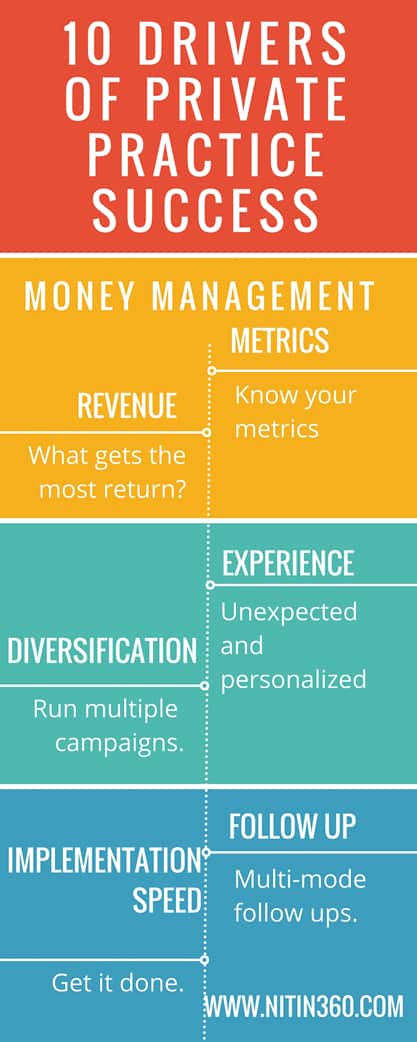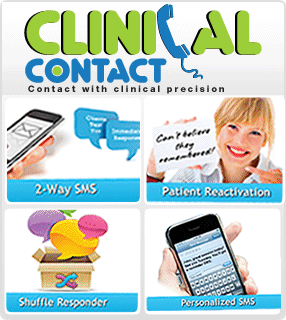“ What are the components of a successful patient newsletter? ”
If there’s one way to grow your practice, it’s with the use of professional, content-rich newsletters to physicians and patients. This helps build credibility and establish expert status.
The following is an outline of the type of content that should be a part of your clinic’s newsletter, and how it should be organized for maximum effectiveness.
The Three Components of an Effective Newsletter
 1.) Clinical information: This helps the reader in their day-to- day lives. Every newsletter must provide the reader some information about a particular condition and lead them back to schedule an appointment with you. Ask the patient to pick up the phone and call your clinic.
1.) Clinical information: This helps the reader in their day-to- day lives. Every newsletter must provide the reader some information about a particular condition and lead them back to schedule an appointment with you. Ask the patient to pick up the phone and call your clinic.
2.) Authority content: This demonstrates your expertise, credentials and success as a private practice owner.
3.) Bonding content: This is missing in most newsletters. This helps the reader identify with you and get to know you better. The biggest mistake most private practice owners make with their print newsletter is the presence of MOSTLY clinical content
Your newsletter should be organized in the following manner:
-
Newsletter Banner:
Your clinic should have a customized banner at the top of your newsletter. This allows the reader to know, immediately, that it was written by you. This banner should include your clinic name, a ‘hook’ about your clinic, a call to action, your phone number and address. It should address the following – who you are, what makes you stand apart, why patients should care and how they can contact you.
-
The Opening Salvo:
As they say, the first impression is often the last. The opening paragraph should ‘hook’ the reader, and entertain them. In most cases, it doesn’t even have to be about your practice and your services. The opening article should include elements of your life that your targeted audience can possibly identify with. It is their “connection” with you. It should center on an event in your life, (your anniversary, birthday, etc.); interests beyond the practice; family; or even pets. If you do this well, your readers will look forward to your newsletter. They will want to know what is going on in your practice.
-
Headlines and Sub-Headlines:
Very few people will read your entire newsletter. This is good news because that means you don’t need to create content with painstaking accuracy. It’s more important that your reader is able to scan things in order to figure out what they want to read further. Think about it this way – if you are reading an article, or a newspaper, you scan the headlines to decide what you’ll read.
Your columns and sidebars should:
-
Welcome new patients
This tells the reader that you are growing and that you are adding more patients. List the first names and initials of last names of patients who came to your clinic – this allows you to demonstrate social proof without violating any patient privacy or HIPAA laws (you are not giving out any personally identifiable information).
This is an excellent way to recognize new patients to your clinic each month. It’s also a demonstration to all the existing patients that they are in the right place because if all these other people keep coming to your clinic every month, they should be continuing to stay active every month.
-
Recognize existing patients
Consider using the entire opening article of your newsletter to spotlight one of your patients. You are publicly praising a patient for his / her success, elevating your status as an expert clinician and getting readers to acknowledge your success at the same time. This builds credibility.
Acknowledge people who have referred to you. Thank your patients for referring and if you send your newsletter to other doctors, thank them for referring also. The public acknowledgment of referrals is a really important thing. It conditions readers that they too, should refer because others are doing so.
-
 Show appreciation and encourage sharing
Show appreciation and encourage sharing Feature patients and their success stories in newsletters (with their written permission) giving them a feeling of importance, recognition, and appreciation. In return the patient’s, particularly the ones with strong social connections and a large circle of influence, will become human billboards for your practice. As with physicians, you want to you choose the right words and position the request as an opportunity for the patient and not a favor to your practice.
-
Tell readers what to do next
Patients should be conditioned to provide more referrals. Remind patients to refer, and remind them often. A patient who reads your entire newsletter is engaged, and a fan. This fan will be responsive to your call to action at the end of the newsletter. A simple script like “We are a small practice and we depend on word of mouth referrals from valued patients like you” can work well.
-
Use your newsletter as an avenue to feature local physicians
Create as much reciprocity as possible with your newsletter. The simplest way to trigger reciprocity in a referral relationship with the physician is to feature the physician as a provider of choice in front of your own patients. You can approach a local physician and ‘offer’ to feature him as a provider of choice in your next newsletter. This is called the physician profiling principle. Even though some physicians will not take you up on this offer, the ones who do are likely to be important referral sources for you in the future. Don’t worry if you have a limited number of people reading your newsletter. It takes time to build a list of readers, and everyone starts somewhere. Focus on providing value and engaging readers. The numbers will grow because none of your competitors are doing this.
-
Educate patients about the ‘next thing’
Provide information about other services you offer and other interesting things / events coming up in your practice. Most of the people that get your newsletter may be interested in one or two more services from you. Don’t make the assumption that ‘they read the sign and will know about it” when they were visiting your practice. Go out of your way to educate patients about all the other services you offer.
-
Limit clinical content
This is counter-intuitive. In fact, it is the secret to maximize consumption of your newsletter: Clinical content should be no more than 40% of your newsletter. A lot of physical therapists want 100% of their newsletter to be clinical content; but, it should be no more than 40% of your newsletter. This means that 60% of your content should be bonding and authority content. It should tell a story and engage the reader.
Remember, the main purpose of the newsletter is to build relationships with physicians and your patients and to retain those relationships for life. With relationship comes retention and referrals.






